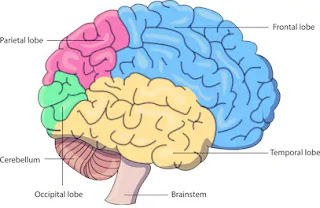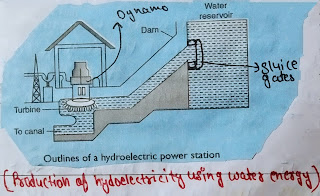Cbse notes social science class-10th || chapter-4 geography notes
Cbse notes class-10th social science(geography)
Chapter-4 Agriculture
Type of Farming , Cropping Pattern, and Major Crops
Agriculture means land cultivation.It also includes animal husbandry and Fishing.
→At present in different parts of India, the types of farming being carried out are primitive subsistence farming , intensive subsistence farming, and commercial farming.
→Primitive subsistence farming is characterised by small and scattered landholding and use of primitive tools. The farmers do not use fertilisers and high-yield varieties of seeds.
→Intensive subsistence farming is carried out in the areas with high population pressure on land . Irrigation, fertilisers, and pesticides are used to get maximum output from limited land .Various machines are introduced.
→Commercial farming is characterized by use of higher doses of modern inputs in order to obtain higher productivity.
→Plantation farming, a form of commercial farming , involves growing of a single crop on a large area.
→In India ,there are three crop seasons–
•Kharif,Rabi,Zaid.
→Kharif:It starts with the onset of the monsoon and continues till the beginning of winter(June-July to september-October).The kharif crops includes rice ,maize,millet,cotton,jute,groundnut,moong,urad,etc.
→Rabi:It starts with the beginning of winter and continues till the beginning of summer(October-December to April-June).The rabi crops include wheat,barley,gram and oilseeds.
→Zaid:This is a short crop season in between the rabi and the kharif season.Crop like watermelons,muskmelons,cucumber,. Some vegetables and fodder crops are the major crops.
→India produces a wide variety to crops,namely cereals,pulses and oilseeds,fibre crops,beverage crops,cash crops.
→Cereals:It covers about three-Fourth of the total cropped area of the country.The principal cereals grown in india are-rice ,wheat,millets,maize,pulses.
→Rice:It requires a temperature between 20° to 27° C and a rainfall above 100 cm.
→Wheat:It requires temperature between 16° to 22°C and a rainfall 50-75cm.
→Millets:Jowar,BaJra,Ragi.
→Fibre Crops:Cotton ,Jute,Hemp and Natural silk are the two important fibre crops grown in india.
→Beverage Crops:Tea and coffee are important beverage crops.
→Cash crops:The major cash crops are sugarcane,rubber,rubber,tobacco,spices and fruits and vegetables.
→India Is the largest producer of oil-seeds in the world .Main oil-seeds produced in India are groundnut, mustard, coconut, sesame (til),soya bean, castor seeds, cotton seeds, linseed and sunflower.Most of there are edible and used as cooking mediums.
→Horticulture is the science and art of growing plant(fruits, vegetables,flowerr, etc).India is the largest producer of fruit and vegetables in the world.India is the producer of tropical as well as temperate fruits.India produces about 13℅ of the world's vegetables.
→Sericulture, or silk farming is the cultivation of silkworms to produce silk.
Technology and Institutional Reforms
→Persian wheel has been replaced by water pump , the plough by tiller and harrow drawn by tractor , the bullock cart by truck.
→Flooding of fields is being replaced by drip irrigation.chemical fertilisers took the place of farm manure .
→Chemical fertilisers are being replaced by bio-fertilisers.
→The technological advancements gave birth to green revolution , white Revolution or Operation flood.
→The govt abolished the Zamindari system.
→Radio and television inform the farmers about new improved technique of farming.
→Rural banks, Cooperative scienties and kisan credit card ensure easy availability of funds to farmers.
→Collectivization, consolidation of holding, co-operation and abolition of zamindari, etc.were given priority to bring about institutional reforms in the country after independence .
→Subsidy on fertilisers is decreased leading to increase in the cost of production.
→The high MSP, subsidies on inputs and committed FCI purchases has distorted the cropping pattern.This has also create a serious imbalance in the inter-crop parties.
→The govt of India made concerted efforts to modernise agriculture by establishing the indian council of Agriculture Research(ICAR), agriculture universities , veterinary services and animal breeding centre,horticulture development, research and development in the field of meteorlogy and weather forecast, etc.
→Kishan credit card(KCC)and personal Accident insurance scheme(PAIS)are the two other schemes introduced by the government of the government of India for the benefit of the farmers.
→In order to ensure the availability of food to all sections of society, our government carefully designed a national food security system.It consists of two components -(a)buffer stock and (b)public distribution system(PDS).
→The FCI procures food grains from the farmers at the government announced maximum support price (MSP).
→Globalisation has exposed the indian farmers to new challenges.
→Today, organic farming is much in vogue because it is practiced without factory made chemicals, such as, pesticides and fertilisers.
→Indian farmers should diversify their cropping pattern from cereals so high value crops.This will increase incomes and reduce environmental degradation simultaneously.








Comments
Post a Comment
Use the respectfully words in comment box.